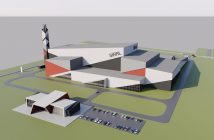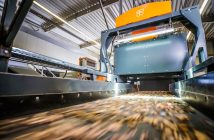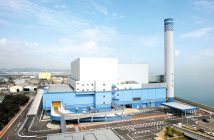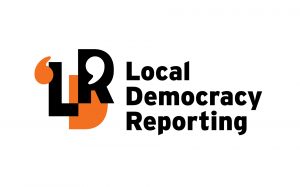 A proposed Kaipara-based $730 million waste to energy incinerator to burn Auckland’s rubbish and produce electricity could be operational by 2028
A proposed Kaipara-based $730 million waste to energy incinerator to burn Auckland’s rubbish and produce electricity could be operational by 2028
By Susan Botting, Local Democracy Reporter Northland
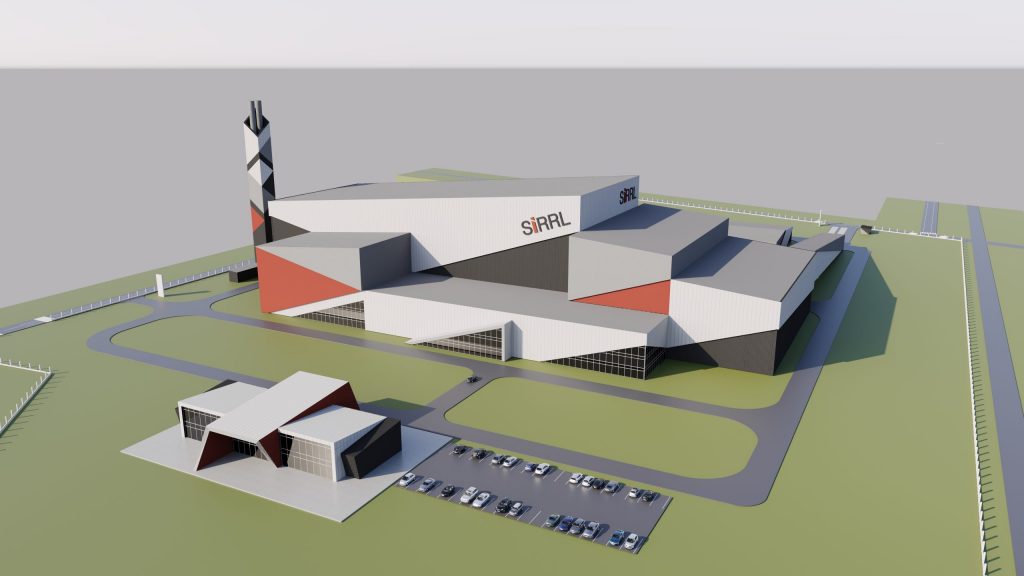
Artist’s impression of the proposed waste to energy plant in Waimate, south Canterbury that SIRRL has been pushing to build since 2021. (Photo supplied SIRRL)
“We’re at an exciting point where all the parts are coming together,” Kaipara Mayor Craig Jepson said of the plant – which will also incinerate Northland rubbish.
If it goes ahead, the proposed waste to energy (WtE) plant would potentially be the country’s biggest.
Construction would potentially start within two years, he said.
Jepson said he wanted the Government to fast track the Kaipara plant’s consenting, rather than it going through Northland Regional Council (NRC) and his council.
New legislation aims to fast-track consenting for regional and national projects of significance, but no projects have been decided on yet.
Kaipara District Council (KDC) has been working with majority overseas-owned South Island Resource Recovery Limited (SIRRL) towards building the waste to energy (WtE) plant in its rohe (territory).
Jepson said Kaipara plant construction could be operating by 2028.
He would not comment on its specific Kaipara location.
SIRRL board director and Ashburton farmer Paul Taylor said Auckland and Northland’s mayors asked the company to supply data for a feasibility study regarding a potential energy from waste plant to be built in the North Island.
The next steps would come from the mayors, in consultation with their councils and communities, Taylor said.
Jepson said he had received support for the plant from Auckland Mayor Wayne Brown, Whangārei Mayor Vince Cocurullo and Far North Mayor Moko Tepania. He has presented about the plant to these men and Auckland Council’s Rodney politicians.
SIRRL has been pushing to build a $350 million waste to energy (WtE) incinerator near Waimate in South Canterbury since 2021. This would process 350,000 tonnes of South Island rubbish annually.
Strong local opposition to the proposed plant has seen the formation of community group Why Waste Waimate.
The decision on whether the proposed Waimate incinerator goes ahead has been with the Government since August.
The proposed Kaipara facility would process double the Waimate’s quantity of rubbish, incinerating about 730,000 tonnes of Auckland and Northland rubbish each year.
Zero Waste advocate Sue Coutts said it was important to consider the WtE incinerator’s climate, environmental and health impacts as part of any consenting process, be that via the councils or the Government’s fast-tracking for major infrastructure projects.
She said it was concerning details of the new fast-tracking approach had yet to come out.
“There are a lot of chemical compounds being produced by the incineration process including dioxins and other forms of endocrine disruptors,” Coutts said.
She said WtE technology did not effectively remove these from plant discharges, and they went on to affect land, and therefore food production.
Jepson said WtE technology had evolved over the last 30 years. This meant earlier worries about dangerous contaminants such as dioxin were no longer of concern.
He said the Kaipara plant would have major benefits with a range of products resulting from its waste processing.
It would create 72MW of electricity annually to feed into the national grid for 165,000 homes. It would also produce 210 tonnes of construction aggregate such as gravel.
Its steam could be used Fonterra’s Maungaturoto dairy factory, while fly ash produced as a result of incineration could be turned into glass and concrete.
Zero Waste’s Coutts said international WtE companies were looking for countries with weak regulations to sell their wares into, because demand had dropped off in Europe.
“They head to small communities with very limited resources to investigate the impacts of incinerators,” Coutts said.
She said the proposed facility went against Northland’s renewable energy push.
A large quantity of fossil fuels such as diesel were used to feed the very high temperatures needed for burning rubbish, she said.
However, Jepson said clean-burning gas would be used to kick start the Kaipara incineration which would then be fed by the energy produced by the rubbish itself.
Jepson has been a WtE advocate for 25 years, since his three-year involvement as an WtE investment company Olivine NZ shareholder and spokesman in the failed then $223 million bid to convert the former Meremere power station to a WtE plant which was canned in 2000.
In 2020, he spent a month at a WtE plant in Nice, France to learn more about its operation.
Jepson became Kaipara Mayor in 2022 and a WtE plant for Kaipara was one of his goals, but he did not campaign on this.
LDR is local body journalism co-funded by RNZ and NZ On Air.






